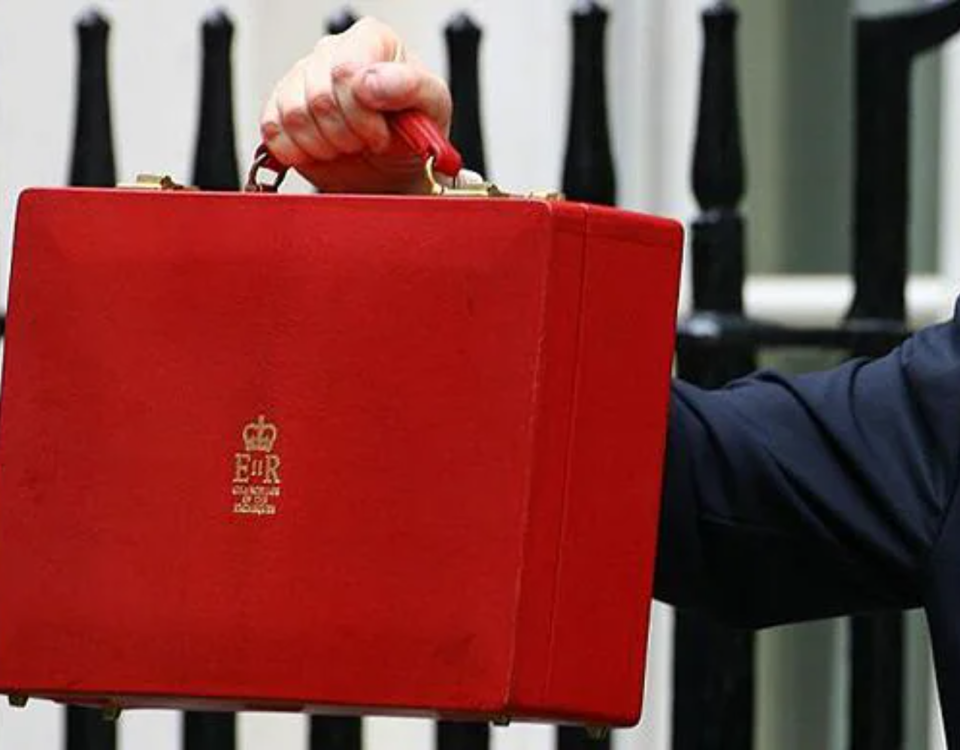Contents
- Introduction and Background
- The IR35 legislation
- Contractors and Coronavirus
- Contractors earnings and ways of working
- Life as a Contractor
- Contractors and financial services
- The road ahead
Introduction and background
Asking the big questions
The contractor workforce is one of the UK’s most important assets, with the skills, flexibility and dynamism provided by these workers contributing £300bn to the economy annually.
And as the role and value of contractors – both to the economy and society – grows in the post-pandemic world, so does the need to learn even more about this way of working.
From evolving tax legislation to the impact of Coronavirus, along with the benefits and challenges contractors experience, in our Annual Contractor Survey 2021, we focus on the issues impacting our customers most.
In our study, which 1288 contractors participated in, we consider what this insight means for contracting now and in the future, before offering our expert view.
Background
Nearly three-quarters of those surveyed are male, with the bulk of respondents aged between 41 and 60. 46% have spent at least 7 years working for themselves, with 43% (the largest group) commanding a day rate between £500 and £749. 39% of respondents work through their own limited company as contractors, exactly half (50%) operate via umbrella companies and relatively few (5%) are sole traders. As a result, 72% identify themselves as contractors.
The IR35 legislation
Understanding the true impact of IR35 reform in the private sector
The rollout of IR35 reform in the private sector on 6th April 2021 was a huge moment for the contractor sector, along with the businesses that rely on them. Changes to IR35 legislation saw medium and large companies handed the responsibility for determining IR35 status, with the liability also transferring from the contractor to the fee-paying party if all legal obligations are fulfilled in the supply chain.
In the lead up to reform, which mirrored changes introduced in the public sector in 2017, there were widespread fears among contractors and some experts on how well businesses would cope, if at all.
But has this been the case? Or will contracting overcome its latest obstacle? Our research sheds important light on the impact of IR35 reform so far.
Here are the key findings…
The biggest challenge in 2021
IR35 was highlighted as 55% of contractors’ biggest challenge in 2021 – more than double that of the second biggest issue, which was finding clients (25%).
And of those who IR35 is a consideration for (90%), 60% said their work had been affected in the past 12 months. Of those who were impacted, 81% had negative (37%) or very negative (44%) experiences.
Uplift in contractors operating inside IR35
The increase in contractors operating inside IR35 is likely to have influenced attitudes towards IR35. 52% said their most recent contract was deemed inside IR35 – a 16% increase when measured against 2020 data, prior to IR35 reform in the private sector.
While for many this uplift will be seen as a cause for concern, the fact that 37% were operating outside IR35 following the changes shows these opportunities remain.
Additionally, the number of contractors who, in our 2020 survey, took the view that reform would mark the end of contracting via a limited company has decreased, falling by 15% – from 62% to 47%.
Fears over fairness of client IR35 assessments
Even so, it’s difficult to overlook that 40% of contractors do not believe their client has assessed their IR35 status fairly. An additional 21% of respondents not being sure doesn’t help to alleviate these concerns. However, the 30% who are satisfied does show some that contractors do trust the fairness of their client’s assessment.
Although, many contractors – including some of the 9% who answered ‘other’ when asked if they had been fairly assessed – alluded to ‘blanket IR35 determinations’, meaning that they believe their client placed them inside IR35 regardless of their true status. This is a non-compliant approach to reform, given it lacks ‘reasonable care’.
Surge in umbrella working brought on by IR35 reform
For the majority (82%) of contractors operating via umbrella companies, which accounted for 39% of those surveyed, working this way was a requirement of the client in response to IR35 reform.
IR35 isn’t a consideration for umbrella workers, who are employed under a contract of employment and therefore carry employed status. Above all else, this finding suggests that following IR35 reform more businesses are turning to umbrella working as a way to retain flexible talent and mitigate the risks presented by the changes.
However, forcing contractors to work this way also presents a threat to businesses, with many contractors unhappy about being left with no choice but to work on the payroll as employees.
That said, 56% of contractors who have become umbrella workers have maintained the same day rate, with 28% even experiencing an increase in their fees. The smallest group (16%) are charging less following this move.
Reform has a mixed effect on contractor rates
When asked if their day rates had increased in the time since IR35 reform, nearly half strongly disagreed (22%) or disagreed (25%). However, 35% neither agreed nor disagreed, suggesting the financial implication of these changes has perhaps not been as dramatic as feared. 18% meanwhile agreed (15%) or strongly agreed (3%) that IR35 reform has enabled them to increase the amount they charge clients.
Even split of optimistic contractors and those reviewing their plans
The difficulties brought on by IR35 reform have understandably led some contractors to think about their future. This is signalled by the 41% who feel somewhat negative about working this way moving forward.
Along with a rise in umbrella working, 25% of survey respondents have been exploring the possibility of contracting overseas, while 27% have considered permanent employment. 9% are switching between umbrella working and contracting depending on the nature of the assignment and a number are even thinking of retiring early.
These findings align with research carried out by the trade association, IPSE, which also highlighted that 28% of contractors intend to only work with small businesses, which are exempt from IR35 reform.
Contractors and Coronavirus
How the pandemic impacted earnings and if government support was sufficient
Coronavirus resulted in a 9.9% decline in UK GDP in 2020, marking the steepest annual drop in 300 years, following the Great Frost of 1709. In 2021, a strong recovery saw the economy rebound, largely thanks to the £315bn worth of government support packages and the easing of lockdown restrictions. As things stand (January 2022), GDP now sits 0.7% above pre-pandemic levels.
So the impact of Coronavirus on the entire economy is fairly clear. But how has it affected freelancers and contractors? And what are the potential long-term implications?
Let’s take a look…
Most contractors unaffected by Covid
Just over half (50.5%) of contractors said their work wasn’t affected by the pandemic, with 77% not needing to take on any work other than contracting – whether part or full-time employment – to supplement their income. However, the remaining 45% acknowledged an impact brought on by Coronavirus, whether positive or negative.
Those impacted, forced to overcome challenges
Unsurprisingly, most of this group have experienced problems – from having clients postpone or cancel contracts altogether (38%) to struggling to find work (39%) and even needing to stop working on projects themselves (17%). Although, 16% did note a rise in the number of contracts they worked on throughout Coronavirus.
Gaps in Covid support apparent among contractors
Of those affected, 41% didn’t require any support, with the same percentage saying they weren’t eligible for the government packages.
This could be in reference to the so-called gaps in support. Contractors operating via their own limited company were unable to claim the Self-employment Income Support Scheme (SEISS) and due to the low salary drawn by many, could only claim a limited amount under the Coronavirus Job Retention Scheme (CJRS) while being expected to stop working while ‘on furlough’.
Saying that, 15% of contractors did make use of the CJRS, with 12% securing a government-backed loan for their business and 9% deferring tax payments.
Even so, that 48% of survey respondents do not believe the government’s Coronavirus support has been sufficient speaks volumes about contractors’ feelings towards these schemes. The fact that the Court of Appeal recently ruled that the SEISS discriminated against self-employed mothers also highlights the extent of this problem.
Rates remain consistent despite the pandemic
When looking deeper into the financial implications of Coronavirus on contractors, the good news is that most (53%) said their rates remained consistent throughout the pandemic – and even a quarter experienced higher rates, with the remaining 22% seeing their charges fall.
Broken down, the changes in fees were:
- £7.80 (average hour increase)
- £17.80 (average hour decrease)
- £101 (average day increase)
- £116 (average day decrease)
Importantly, our research indicates that rates remained relatively consistent for men (57%) and women (60%), suggesting that neither of these genders’ pay was worse affected than the other, broadly speaking.
Contractors earnings and ways of working
Exploring rates of pay, number of contracts held and working practices
To help us better understand different ways of working, we also asked contractors about the types of projects they took on in 2021, how much they charge, how long these contracts lasted on average, the number of hours and days they work per week and more.
Along with some expected answers, the feedback we received helped us draw some fascinating conclusions…
Contractors command healthy fees
As touched on earlier, by and large contractor rates were resilient in 2021. But how much do contractors typically charge their clients daily and hourly?
Well, the vast majority (76%) command day rates between £250 – £499 (34%) or £500 – £749 (42%). This suggests healthy earnings for those who spent the majority of their time engaged in contract.
For those who charge by the hour, the largest group of contractors (16%) are paid between £41 – £50 hourly. Although, there is a fairly even split of fees across the board.
Gender pay gap apparent
The gender pay divide is clear. For example, the biggest group of females (47%) charged between £250-£499 a day, whereas the largest number of men (48%) command fees between £500-£749. Above all else, this shows that contracting has some way to go to create a level playing field.
Remote working the norm
Taking into account multiple UK-wide lockdowns and work from home recommendations, it came as little surprise to learn that 75% of contractors’ most recent project was based remotely – something that for 75% of respondents was tied directly to the pandemic.
Unpaid overtime commonplace
More of a shock, though, was the number of contractors who worked overtime in 2021 but didn’t charge their clients for it. As many as 47% worked over the contracted hours, but 74% didn’t bill for this time. This could perhaps be linked to the fact that 77% charge per day, rather than hourly (16%), which would in theory make the transaction more straightforward.
Time spent working aligns with employees
There is a perception of contracting which entails long hours and burning the midnight oil. But is this the reality? Do contractors spend more time working than the average employee?
Our findings indicate a relatively healthy work/life balance – and one not too dissimilar from a standard employee’s – with 62% of contractors working between 35 – 45 hours a week, which for 69% is spread across 5 days.
One in three experience a rise in contracts
Also welcome news was the 39% of contractors who said the number of jobs they worked on in 2021 increased. This is a 24% increase from 2020 which, amid a pandemic, is a positive takeaway.
This finding is balanced out slightly by the 39% of contractors who told us the number of projects they had worked on remained the same and the 22% who experienced a drop.
Our statistics also show that project length tends to vary considerably, with the most common time spent on one contract being 6 months. Most importantly, though, two thirds (66%) said this period was enough time to deliver what was necessary for the client.
Life as a Contractor
The draw to contracting, its benefits and what it means for the future
From work/life balance, to flexibility and earning opportunities, the advantages of working for yourself are well known. But in light of the changing economic and tax landscape, has this changed? In other words, what drew people to contracting in 2021? How does this compare to 2020? And what might all of this mean going forward?
Here’s what we found…
The motivating factors
Challenging any preconceived conception that contractors work this way purely for the money is the 57% (the biggest group) who chose contracting for the greater flexibility it offers. This is an 11% uplift when measured against 2020 (46%).
That’s not to say the potential to earn more isn’t an important consideration, with 55% stating it as a key factor. However, money looks to have become less of a pull for contractors in 2021, compared to 2020 (82%).
Other notable motivators were the chance to be your own boss (38%) and the ability to strike a better work/life balance (55%). Although, both were less important to contractors last year when compared to 2020 – 57% and 55% respectively.
Improved work/life balance stands out
So has the move to contracting paid off? Overall, it seems so. When asked about the aspect of contracting they have enjoyed most in the past 12 months, 49% of contractors said a better work/life balance. Meanwhile, 48% attributed higher pay, 47% relished the variety and flexibility of their job, while 43% liked being able to work on projects they’re interested in.
Contracting not without its challenges
As any person working for themself will tell you, self-employment isn’t without its challenges. In addition to IR35, which stood out as the biggest (55%) threat in 2021, work/life balance (19%), finding new clients (25%), managing finances (15%), late payment (16%) and even the fear of failure (13%) affected contractors last year.
The future of contracting
But the hurdles to overcome aren’t enough to put people off working this way. And while those feeling somewhat or very positive (51.6%) about the future of contracting only just shaded those who don’t (48.4%), two thirds (66%) of our survey respondents would recommend contracting to a friend. This is despite the majority of contractors (81% of the 60% who were affected) being impacted negatively by IR35 reform.
Contractors and financial services
Focusing on the accessibility and affordability of key financial products
The rapid growth of contracting over the years has led to the emergence of many tailored financial services – from contractor mortgages to flexible pension schemes and business insurance.
And while the sheer choice of these contractor-specific products is a firm indication of the availability of these services, to truly understand how accessible they are we asked contractors to share their experiences.
Our insight suggests…
More contractors contributing to personal pension schemes
How and if contractors are saving for their retirement has been a big issue for a number of years, with concerns that many self-employed workers won’t be prepared financially. For example, in our 2020 survey, only 54% of contractors paid into a personal pension scheme.
However, based on our 2021 findings, there has been an increase in contractors saving into personal pension pots, rising to 61% – this looks to be a result of the 20% of contractors who, in 2020, expressed an interest in doing so.
It’s important to note that this doesn’t take into account those utilising employer pensions schemes, which many contractors also contribute to, whether via umbrella companies or their own businesses.
Planned retirement age falling
Being more financially secure for retirement looks to have contributed to fewer contractors preparing to work beyond the age of 65. Our study shows that 40% expect to work past 65, which is a 12% drop compared to 2020. With the State Pension Age currently 66, the data indicates that most contractors either expect to stop working before the average retirement age in the UK.
Post-Covid mortgage market requires expertise to navigate
The vast majority (79%) of contractors surveyed are homeowners. This suggests that mortgages have, over the years, become more accessible for this sector of the workforce.
Quote from CMME on why expert/tailored advice is key?
The road ahead
Having pored over the data and considered the view of contractor experts, you might be wondering what all of this means. Where does the contracting market stand? How might it look in one, two or even ten years?
In conclusion, while this study brings the challenges faced by contractors into sharp focus, it also highlights the sheer resilience and determination of independent workers.
For example, despite the difficulties presented by IR35 reform, in particular, speculation that this way of working would die out, looks to be unfounded. The drop in contractors who believe the change will mark the end of limited company contracting is testament to this.
Also cause for optimism is the 49% of contractors expecting to continue contracting for the next 6 years at least, which includes 27% – the biggest group – who see themselves working this way for more than 11 years.
This points towards a positive future and one that the UK economy and society stands to benefit from.











